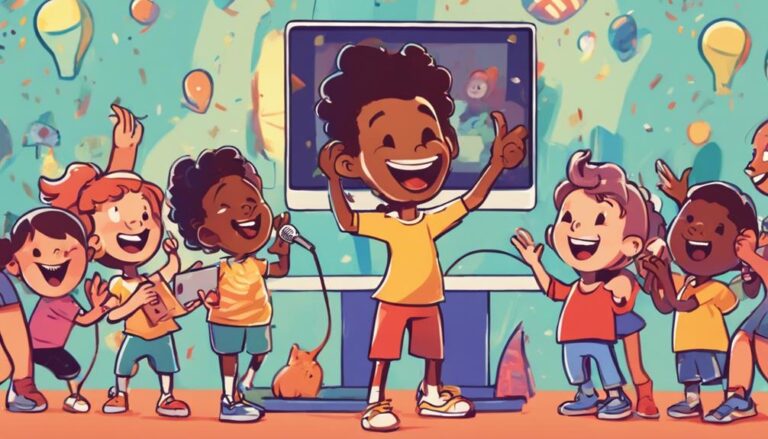Make Engaging Whiteboard Videos With These Tools
You're looking to create whiteboard videos that capture your audience's attention, but where do you start? Choosing the right software is a vital first step. With so many options available, key to success is weighing your creative vision, skill level, and production goals. What features are must-haves for you? Do you need advanced animation capabilities or simple, intuitive design tools? The software you choose will set the tone for your entire project. Let's explore the key considerations and tools you'll need to create engaging whiteboard videos that resonate with your audience.
Key Takeaways
- Invest in user-friendly software with intuitive interfaces and essential drawing tools.
- Master vector tools, brush engines, shape libraries, and animation tools for visual storytelling.
- Utilize a high-quality USB microphone, proper mic techniques, and audio editing software for clear audio.
- Leverage motion graphics, visual effects, and shifts to enhance video and capture audience attention.
Choosing the Right Software
When creating whiteboard videos, you'll need to choose the right software to bring your ideas to life, and with numerous options available, it's crucial to weigh your specific needs and goals before making a decision.
Consider the software compatibility with your operating system, as some programs are exclusive to either Windows or macOS. Verify the software you choose is compatible with your computer's specs to avoid performance issues.
Your user interface preferences also play a significant role in selecting the right software. If you're not tech-savvy, look for software with an intuitive and user-friendly interface. Some popular options, like Powtoon and GoAnimate (now known as Vyond), offer drag-and-drop functionality and a vast template library.
On the other hand, if you're comfortable with advanced features, consider software like Adobe Animate or OpenToonz, which offer more complex tools and customization options.
Ultimately, the software you choose should align with your creative vision, skill level, and production goals. Take the time to research and compare different options to find the best fit for your whiteboard video project.
Essential Drawing and Design Tools
With your chosen software in place, it is vital to familiarize yourself with the drawing and design tools that will enable you to craft compelling whiteboard animations and illustrations. Mastering these tools is key to releasing your creative freedom and effectively conveying your message through visual storytelling.
Vector tools enable you to create scalable illustrations and animations, ensuring your designs look sharp on any screen.
Brush engines offer a range of brush styles and textures, allowing you to achieve unique and expressive visuals.
Shape libraries provide pre-made shapes and icons to streamline your design process and add visual interest.
Animation tools allow you to bring your designs to life with intuitive and customizable animation options.
Audio and Voiceover Options
You've mastered the drawing and design tools, now it's time to explore the audio and voiceover options that will bring your whiteboard animations to life and elevate your message.
When it comes to recording high-quality audio, investing in a good microphone is essential. Consider using a USB microphone, such as the Blue Yeti or Rode NT-USB, which offer excellent sound quality and ease of use.
Follow microphone tips such as positioning the mic 6-8 inches from your mouth, speaking directly into the mic, and using a pop filter to reduce plosive sounds.
To guarantee your voiceover sounds professional, consider vocal coaching. Practice speaking clearly and at a moderate pace, and try to relax while recording. Avoid filler words, such as 'um' and 'ah,' and take breaks to rest your voice.
You can also use audio editing software to enhance your recording, such as noise reduction and EQ. By investing time and effort into your audio and voiceover, you'll be able to create engaging whiteboard videos that capture your audience's attention and convey your message effectively.
With the right tools and techniques, you'll be well on your way to creating high-quality audio that complements your animations.
Video Editing and Effects
Video editing is where the various elements of your whiteboard animation, including drawings, animations, and audio, come together to form a cohesive and engaging final product, requiring attention to detail and a solid understanding of visual storytelling techniques.
When editing your whiteboard video, consider using motion graphics to enhance key messages, highlight important points, or illustrate complex concepts.
As you arrange the visual elements, use Shift techniques to smoothly move from one scene to another. These subtle visual effects can create a dynamic atmosphere, increasing the engagement level of your viewers.
Think of these ideas:
- You're transforming text on a digital chalkboard in your viewers' eyes as if drawn in with real chalk and string them with high-pacing words around visuals made beautiful!
- Quick sharp line patterns convey in abstract colorful energetic cut, attracting youth education goals worldwide…
- Strong ink-inspired stylistics colors portray message fluid story – through creating inter-sending contrast engaging space breaks inspiring harmony action when created after montage before first delivery breaks take breathe times back across diverse feel setting within today s stories inspired educating setting feeling confident journey opening yourself…
Adding Visuals and Graphics
As you progress in crafting your whiteboard animation, adding visuals and graphics effectively requires balancing complexity and clarity, so the audience's focus is maintained.
You'll want to create a clear visual hierarchy, guiding the viewer's attention through the animation. This can be achieved by using size, color, and placement to create a logical flow of information.
For example, using a larger font or bold text can help emphasize key points, while smaller text can be used for supporting details.
When incorporating icons, consider their relevance to the content and how they'll be perceived by your audience.
Icons can be a great way to add visual interest and break up text, but using too many can be distracting.
Use them sparingly to highlight important concepts or to illustrate complex ideas.
Additionally, confirm that your icons are consistent in style and color to maintain a cohesive look.
Publishing and Sharing Options
Having established a visually appealing whiteboard animation with clear visuals and graphics, you can now prepare your final product for distribution by exploring publishing and sharing options to reach your target audience effectively.
When publishing your whiteboard video, consider the file formats that will best suit your needs. You'll want to guarantee that your video is compatible with various platforms, including social media, websites, and learning management systems.
To maximize your video's reach, consider the following publishing and sharing options:
Universal file formats: Export your video in widely supported file formats such as MP4, AVI, or MOV to guarantee compatibility with different devices and platforms.
Platform-specific formats: Tailor your video for specific platforms like YouTube, Vimeo, or Facebook by using their recommended file formats and settings.
Responsive video players: Use video players that adapt to different screen sizes and devices, providing a superior viewing experience for your audience.
Embed codes and links: Share your video via embed codes or direct links to easily distribute it across various channels and websites.
Frequently Asked Questions
Can I Use a Whiteboard Video for a Live Presentation?
You can definitely use a whiteboard video for a live presentation to alleviate presentation anxiety and engage your live audience. Pre-recorded videos can help you stay on track, ensuring a smooth delivery of complex information.
How Do I Ensure Consistent Video Quality?
To guarantee consistent video quality, you're reviewing your brand guidelines to confirm alignment with your visual identity. You're also testing equipment, software, and file formats to maintain uniformity across all video productions.
Can I Add Interactive Elements to My Video?
You can add interactive elements to your video by incorporating click and reveal features, hotspot triggers, and other engagement tools, allowing viewers to actively participate and increasing overall video effectiveness through dynamic, user-driven experiences.
What Is the Ideal Video Length for Engagement?
You'll want to keep your video concise to combat viewer fatigue. Research shows that the ideal video length for engagement is around 2-5 minutes, as it aligns with the average attention span of online viewers.
Can I Repurpose My Video for Other Formats?
You can repurpose your video for other formats, leveraging format flexibility to reach a broader audience. Consider cross-platform sharing to maximize your content's impact, adapting it for social media, blogs, or even podcast episodes.
Conclusion
By investing in the right software, drawing and design tools, and audio equipment, you'll be well on your way to creating engaging whiteboard videos.
With video editing and effects, you can refine your visuals and graphics.
Finally, publishing and sharing options enable you to reach your target audience across various platforms and devices.
With these tools and techniques, you'll produce high-quality, mesmerizing whiteboard videos that convey your message effectively and leave a lasting impression.







